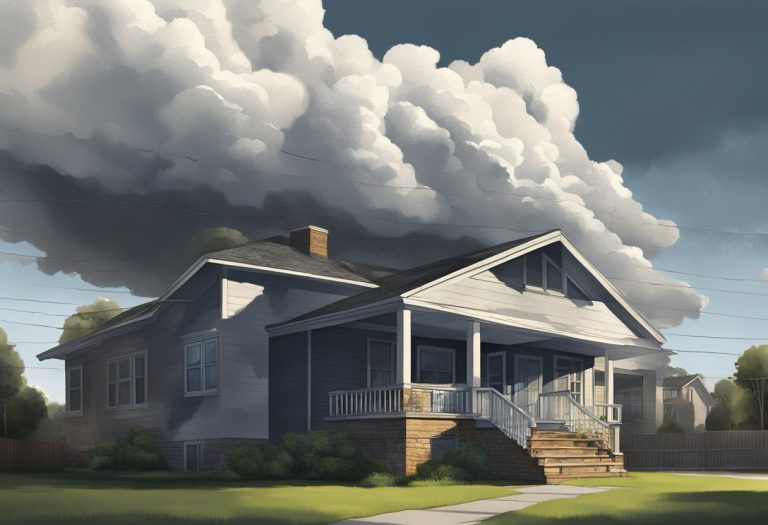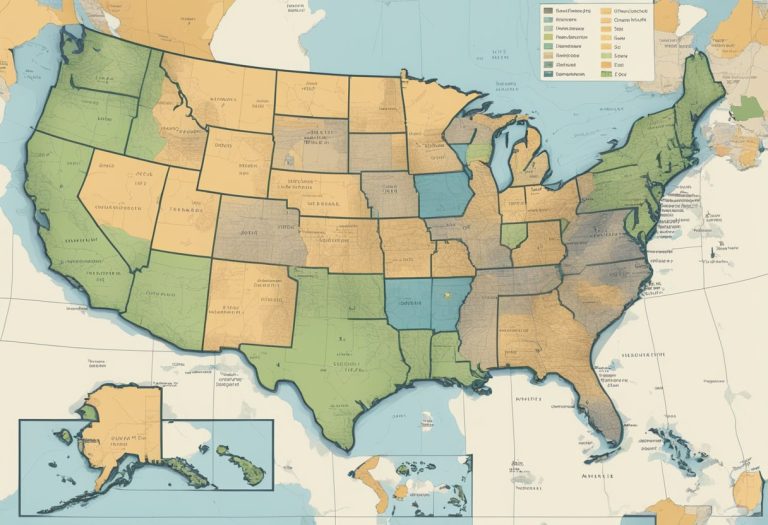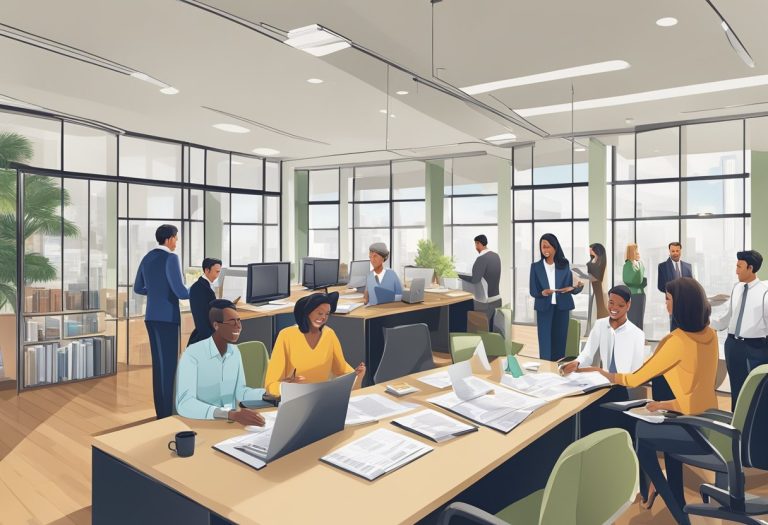What Are the Downsides of Multi-Family Units? Exploring the Challenges
What Are the Downsides of Multi-Family Units? Exploring the Challenges
Investing in multi-family units comes with a unique set of challenges that can temper the enthusiasm of even the most ambitious investors. While the prospect of multiple rental incomes from a single property might seem appealing, the complexities of managing such investments can be considerable. Multi-family properties, which can range from duplexes to entire apartment complexes, involve more intricate tenant dynamics, increased property management responsibilities, and significant financial considerations.

As a landlord of a multi-family dwelling, you are not only managing multiple households under one roof but also navigating a more complex marketplace. The initial costs, for instance, are generally higher than those for single-family units, and securing financing can be a more complicated process. Moreover, the maintenance and operational demands can be daunting, as the wear and tear from multiple tenants accumulate faster than with single-unit properties. This intensifies the need for a diligent approach to upkeep and frequent renovations, potentially impacting your return on investment. Furthermore, the success of multi-family units is closely tied to the fluctuation of real estate markets, which can vary widely by location and economic climate, posing an additional layer of risk to your investment strategy.
Key Takeaways
- Multi-family investments involve complex management and multiple tenant interactions.
- Higher initial costs and maintenance demands can affect investment returns.
- Market fluctuations can greatly influence the profitability of multi-family units.
Understanding Multi-Family Units
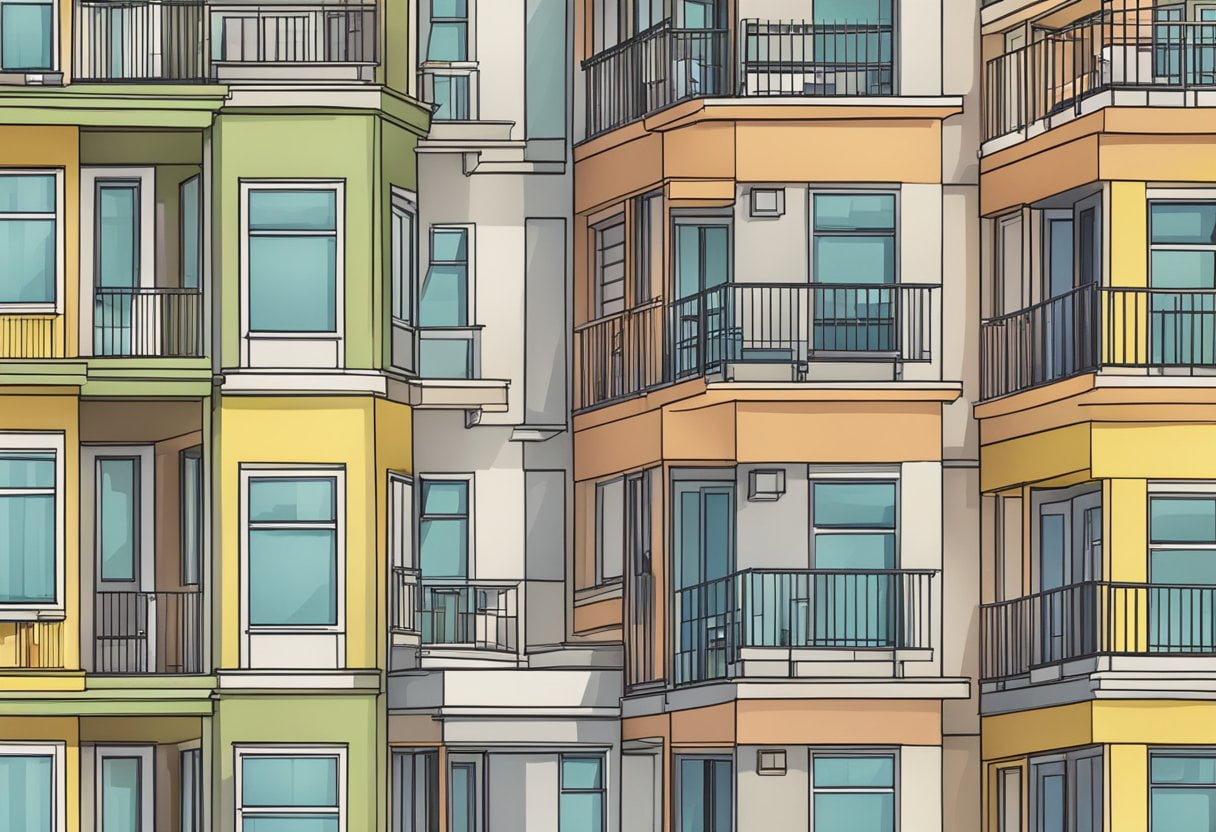
In exploring multi-family units, you’ll discover how they offer a unique living arrangement for multiple households. This insight is beneficial whether you’re considering investment opportunities or looking for a new place to call home.
Defining Multi-Family Homes
Multi-family homes are residential buildings designed to house more than one family or individual living independently from one another. These structures range from a duplex, which consists of two connected units, to larger-scale apartment buildings. What sets multi-family residences apart is the presence of multiple, separate living spaces within a single building or a complex.
Key Characteristics of Multi-Family Homes:
- Multiple Occupants: Designed to accommodate several families under one roof.
- Shared Infrastructure: Common areas like hallways or laundry rooms may be shared.
- Separate Living Units: Each unit has its own living areas, including kitchen and bathroom.
Types of Multi-Family Units
Multi-family units vary in scale and complexity. Here is a brief rundown of the common types:
- Duplexes: Two-unit buildings with separate entrances for each household.
- Triplexes and Quadruplexes: Similar to duplexes but with three and four units, respectively.
- Townhomes: Multiple two-story units connected side-by-side, each with individual entrances.
- High-Rise Apartment Buildings: Tall buildings with many units, served by elevators and often packed with amenities.
Multi-Family Residential Classification:
A) Small Multi-Family Properties:
- Typically one to four units
- Can include duplexes, triplexes, and quadruplexes
B) Large Multi-Family Properties:
- Five or more units
- Includes apartment complexes and high-rise buildings
Each type of multi-family residential unit presents its own set of opportunities and challenges, influencing the living experience of residents and the management approach for landlords.
Financial Considerations
When evaluating the downsides of multi-family units such as duplexes or larger investment properties, you must consider various financial factors that could impact your returns and profitability. Initial costs, cash flow, ongoing expenses, and tax implications are crucial to understanding the financial commitment.
Initial Costs
The initial costs of acquiring a multi-family property can be substantial. Your down payment is typically larger for multi-family homes compared to single-family units, and financing could be more complex. For example, if you’re considering a duplex as an investment property, expect to pay a higher down payment for the mortgage, and be prepared for stringent lending requirements.
- Down Payment: Often 20-30% of the purchase price for investment properties.
- Financing: May include conventional, FHA, or VA loans, with varying eligibility criteria.
Cash Flow and Rental Income
Cash flow is a primary driving force for investors in rental properties. Multi-family units often promise better cash flow due to multiple rent-paying tenants. However, your ability to generate passive income through rental income can be affected by factors such as local demand and vacancy rates.
- Cash Flow: Rental income minus mortgage payment and operating expenses.
- Rental Income: Can fluctuate based on market rates and tenancy.
Expenses and Maintenance Costs
Owning a multi-family property means you’ll incur regular expenses and maintenance costs. While you can delegate responsibilities to a property manager, it comes at a price. Your cash reserves need to cover maintenance, emergency repairs, and capital improvements which can dent your cash flow.
- Maintenance: Regular and emergency maintenance to keep the property in good condition.
- Property Manager: Optional but can simplify the operation at the expense of your profits.
Tax Implications
The tax implications of owning a multi-family investment can be complex. You’ll be responsible for property taxes, and although some expenses are tax-deductible, the overall impact on your returns can vary. Keep in mind that appreciation and the method of property valuation can also affect your tax strategy.
- Property Taxes: Calculated on the property’s assessed value.
- Tax Deductions: Includes certain operating expenses, mortgage interest, and depreciation.
By critically assessing these financial aspects, you can better gauge the downsides of multi-family unit investments and their impact on your overall investment strategy.
Upsides and Downsides of Multi-Family Units
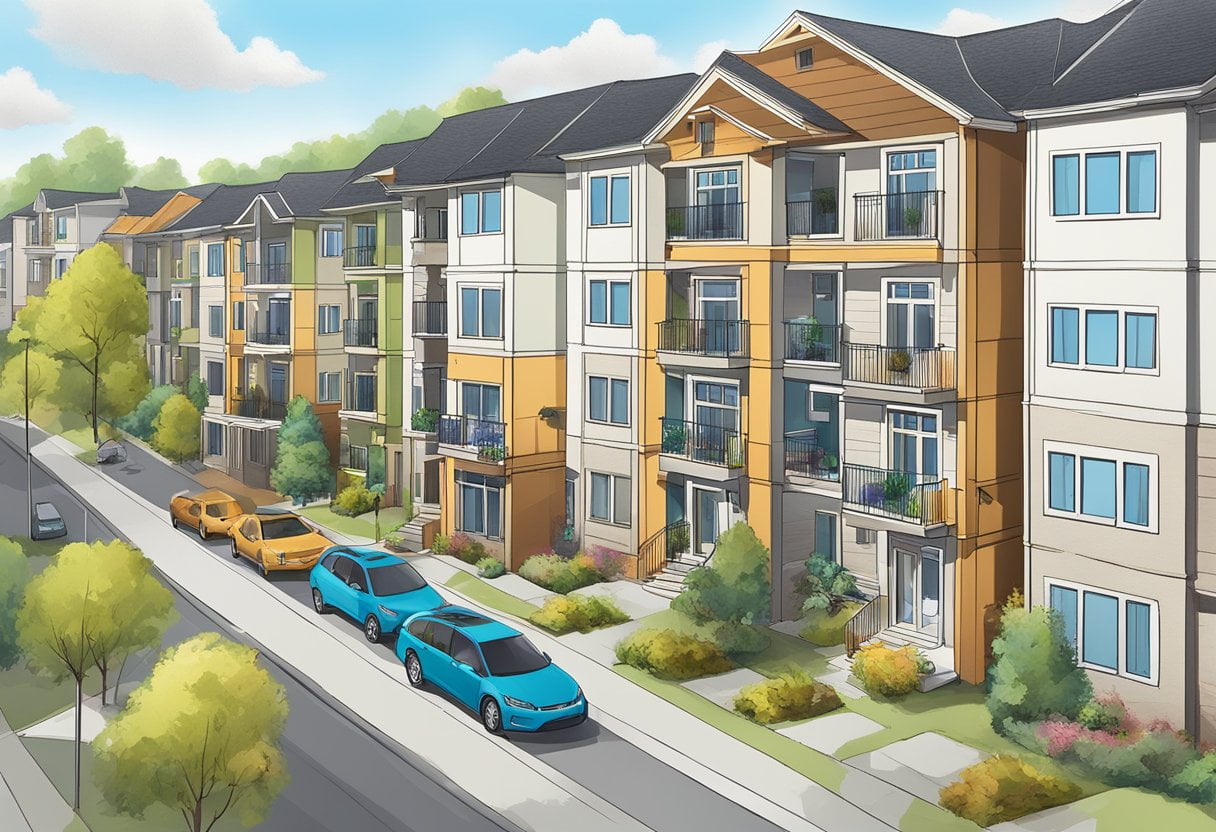
When considering multi-family properties as an investment, you should weigh the potential for stable cash flow and risk mitigation against the increased responsibilities of being a landlord and managing tenant turnovers.
Advantages
Cash Flow:
Multi-family homes can significantly boost your income, as each unit contributes to the property’s overall cash flow. This can enhance your profitability, especially when units generate rent that exceeds the costs associated with maintenance and mortgage payments.
Risk Mitigation:
Owning a multi-family property can help to diversify your investment portfolio. Since there are multiple tenants, you’re less likely to face a complete loss of income. If one unit becomes vacant, the other units can still provide income, thus mitigating the risk associated with tenant turnover.
Disadvantages
Management Intensity:
Investing in multi-family properties can be management-intensive. You might need to deal with multiple tenant issues, maintenance requests, and administrative tasks. This could necessitate hiring a property manager, which would add to your overhead.
Tenant Turnover:
While having multiple tenants can diversify risk, it also means you could face more frequent tenant turnovers. Turnovers can be expensive and time-consuming, potentially eroding the income stability and profitability of your investment property.
Tenant and Landlord Dynamics

When investing in multifamily homes, understanding the tenant and landlord dynamics is crucial. Your success as a landlord hinges on effectively managing tenant relationships, turnover, and adhering to legal responsibilities.
Dealing with Tenants
Your interactions with tenants define their living experiences and indirectly affect your property’s profitability. Strong communication skills and a professional demeanor are essential. You must address maintenance issues promptly to ensure tenants’ satisfaction and uphold the reputation of your rental property. Delays in resolving these issues can result in dissatisfaction and potential disputes.
Tenant Turnover and Retention
Frequent tenant turnover can become a significant challenge for you. Each tenant departure requires a process of cleaning, advertising, and screening for new tenants, which can be costly and time-consuming. To minimize turnover, focus on retaining tenants through proactive measures:
- Maintenance: Regular updates to maintain property conditions.
- Responsive Management: Swift action on complaints and repair requests.
Legal and Management Challenges
As a landlord, you bear the responsibility of understanding and abiding by the myriad of housing regulations that govern multifamily units. This may involve:
- Leasing agreements: Ensure these are legally compliant and clear to avoid misinterpretations.
- Procedures: Establish consistent rent collection, maintenance, and eviction procedures to avoid legal pitfalls.
Engaging a professional property management company might be an option to help you navigate these complexities, especially if you’re new to investing in multifamily homes or if you own several properties.
Market Factors and Location

When investing in multifamily units, your financial success can be greatly influenced by market factors and the location of your property. Understanding neighborhood characteristics and market trends is crucial for optimizing your rental income and ensuring long-term sustainability.
Neighborhood Characteristics
- Commercial Real Estate Proximity: The closeness of commercial real estate can impact your property’s desirability. A neighborhood with an abundance of shops, restaurants, and entertainment options typically attracts more tenants, potentially increasing your rental income.
- Availability of Amenities: Look for neighborhoods that offer a variety of amenities. Parks, schools, and public transportation can make your multifamily property more appealing and justify higher rent prices.
- Safety and Reputation: Safety is paramount. You would want to choose locations with low crime rates, as this affects tenant satisfaction and the reputation of the neighborhood, ultimately impacting your turnover rates and rental income.
Market Trends and Demand
- Rental Market Demand: Current trends indicate a varying degree of demand depending on the location. Your rental income depends significantly on the demand for housing in the area. Research and understand the specific trends for multifamily units in your targeted location.
- Supply Constraints: High numbers of new multifamily units entering the market can lead to increased competition and potential oversupply. Keep an eye on the supply of new rental units, as this can affect your occupancy rates and rental income.
- Economic Indicators: Job growth and the overall health of the economy in your market are influential factors. Areas with negative job growth, for instance, might lead to less demand for rental units. Conversely, a thriving job market could enhance demand and enable higher rents.
By carefully weighing these neighborhood and market criteria, you can make better-informed decisions about where to invest in multifamily real estate.
Physical and Design Aspects
When considering multi-family homes, it’s essential to recognize the complexities of their construction and the impact on your living space quality and privacy.
Construction and Renovation Considerations
When you purchase or invest in a multi-family home, construction and renovation projects can be far more challenging than in a single-family dwelling. Here are the specifics you need to know:
- Scalability: Construction in multi-family units often involves coordinating improvements across multiple rental units simultaneously. This can lead to increased costs and complexities in project management.
- Permitting: Acquiring permits for improvements or renovations in multi-family homes can be more arduous due to additional regulations and approval processes.
It’s important for you to understand that the turnover rate in multi-family properties might require more frequent renovations to keep the units attractive and functional for new tenants.
Living Space Quality and Privacy Issues
Living space quality and privacy are often significant concerns in multi-family homes due to their design and density.
- Noise: Sharing walls with neighbors means that soundproofing is crucial to maintain privacy. In multi-family units, you’re more likely to experience noise from adjacent and overhead living spaces.
- Yard and Common Areas: In many cases, multi-family homes come with limited yard space, which might impact your enjoyment of the outdoors or personal gardening projects.
Achieving a balance between living space quality and maximizing the number of rental units can be a meticulous aspect of property management. It’s vital for you to consider these factors when looking into multi-family housing opportunities.
Investment Strategy and Long-Term Planning
In the realm of multi-family units, your investment strategy and risk management go hand in hand with your long-term planning. It’s essential to understand how to strategically scale your portfolio and assess the risks to align with your financial goals.
Scaling Your Portfolio
When considering multi-family properties, you need to plan for a more substantial initial investment compared to single-family homes. The down payment for these types of properties can be around 20%, which ties up a larger amount of your capital. Expanding your portfolio may involve:
- Criteria Selection: Define what types of multi-family properties you want—number of units, location, and tenant demographics.
- Capital Allocation: Distribute your investment capital effectively, considering your overall financial health and liquidity requirements.
- Financing Strategy: Secure financing that aligns with your investment returns and risk profile while adhering to applicable regulations.
Risk Assessment and Mitigation
Your risk when investing in multi-family units is diversified through multiple tenants. However, consider these factors:
- Vacancy Rates: Even with multiple units, vacancies can occur simultaneously, affecting your returns. Understand the market demands to keep vacancy rates low.
- Regulation Compliance: Stay informed of zoning laws and regulations that can impact your ability to optimize the property.
Assessing the risks places you in a better position to develop a robust investment strategy, ultimately affecting the performance and stability of your real estate investing portfolio. Consider the long-term effects of market cycles, property management requirements, and economic factors that influence multi-family housing, to ensure your investment aligns with your financial aspirations.
Frequently Asked Questions
When considering investing in multifamily properties, understanding the potential downsides is as important as knowing the benefits. Here we address some common concerns you might have regarding multifamily units.
What are the common financial risks associated with investing in multifamily properties?
Investing in multifamily properties carries financial risks such as potential for higher vacancy rates, which can lead to lost income. You may also face unforeseen capital expenses for repairs and maintenance, negatively impacting your cash flow.
What maintenance challenges can owners expect when managing multifamily homes?
Owners of multifamily homes can encounter increased maintenance requirements due to the number of tenants and the wear and tear on shared spaces. Coordinating repairs and dealing with multiple service providers can also be more complex than single-family homes.
How do multifamily homes typically compare to single-family homes in terms of long-term investment value?
Multifamily homes may experience different investment dynamics than single-family homes. They often offer a solid revenue stream but may appreciate in value at different rates due to market demand fluctuations for such properties.
What are some of the potential drawbacks for residents living in multifamily housing units?
Residents of multifamily housing units may deal with noise from neighbors, limited control over shared amenities, and less personalized space. These factors can affect the overall desirability for some tenants.
In what ways might multifamily units impact the level of privacy for tenants?
Multifamily units often mean living in closer proximity to neighbors, which can result in a reduced sense of privacy. Shared walls and communal areas are common points where privacy can be compromised.
Can owning a multifamily home affect the ease of resale compared to single-family properties?
Multifamily homes can be trickier to sell than single-family ones due to a smaller buyer pool and the complexity of assessing the property’s income-generating potential. These factors can influence the liquidity and resale value.
Statistics
- Class A multifamily properties often achieve the highest rent premiums, reflecting a rent differential of approximately 20%–35% above Class B assets.
- The vacancy rate for multifamily properties typically fluctuates between 4% to 5%, signaling a tight supply-demand balance in many urban markets.
- Millennials and Gen Z form the largest demographic driving demand, with over 60% preferring to rent in multifamily units in urban and suburban areas.
- New multifamily construction starts in the U.S. were projected to reach over 370,000 units by the end of 2022.
- The multifamily sector’s share of total commercial mortgage-backed securities (CMBS) issuance was over 20% in 2021.
- Investors allocated over $40 billion to multifamily real estate in the U.S. via private equity funds during 2021.
- The average capitalization rate (cap rate) for multifamily investments in the United States remained stable around 5% to 6% through late 2022.
- Occupancy rates for multifamily properties have shown resilience, with a national average rate hovering above 95% as of 2022.
External Links
- Crexi highlights why multifamily housing is a strong investment choice in the current market.
- Marcus & Millichap provide a forecast for multifamily investment in 2021, reflecting key market indicators.
- Investopedia outlines strategies for investing in multifamily real estate, offering a thorough overview for new investors.
- Udemy offers a course for those looking to understand the basics of multifamily real estate investing.
- Reonomy discusses the latest multifamily investment trends to watch.
- Fannie Mae offers a multifamily market outlook with forecasts and analysis.
- CBRE’s quarterly U.S. Multifamily Figures report gives valuable data on market trends.
- BiggerPockets provides a comprehensive guide on investing in multifamily properties.
How To
How to Scale a Multifamily Investment Portfolio
Scaling a multifamily investment portfolio is achieved through calculated growth and reinvestment. Start by setting clear goals for your portfolio’s size and the level of cash flow you aim to achieve. Reinvest profits from existing properties into additional multifamily units. Utilize leverage wisely by taking out mortgages on new properties with favorable terms. Develop a systemized approach for property management, whether in-house or through a management company, to ensure consistent and quality oversight as the portfolio grows. Continuously educate yourself on market changes and seek advice from mentors or financial advisors experienced in multifamily investments.

